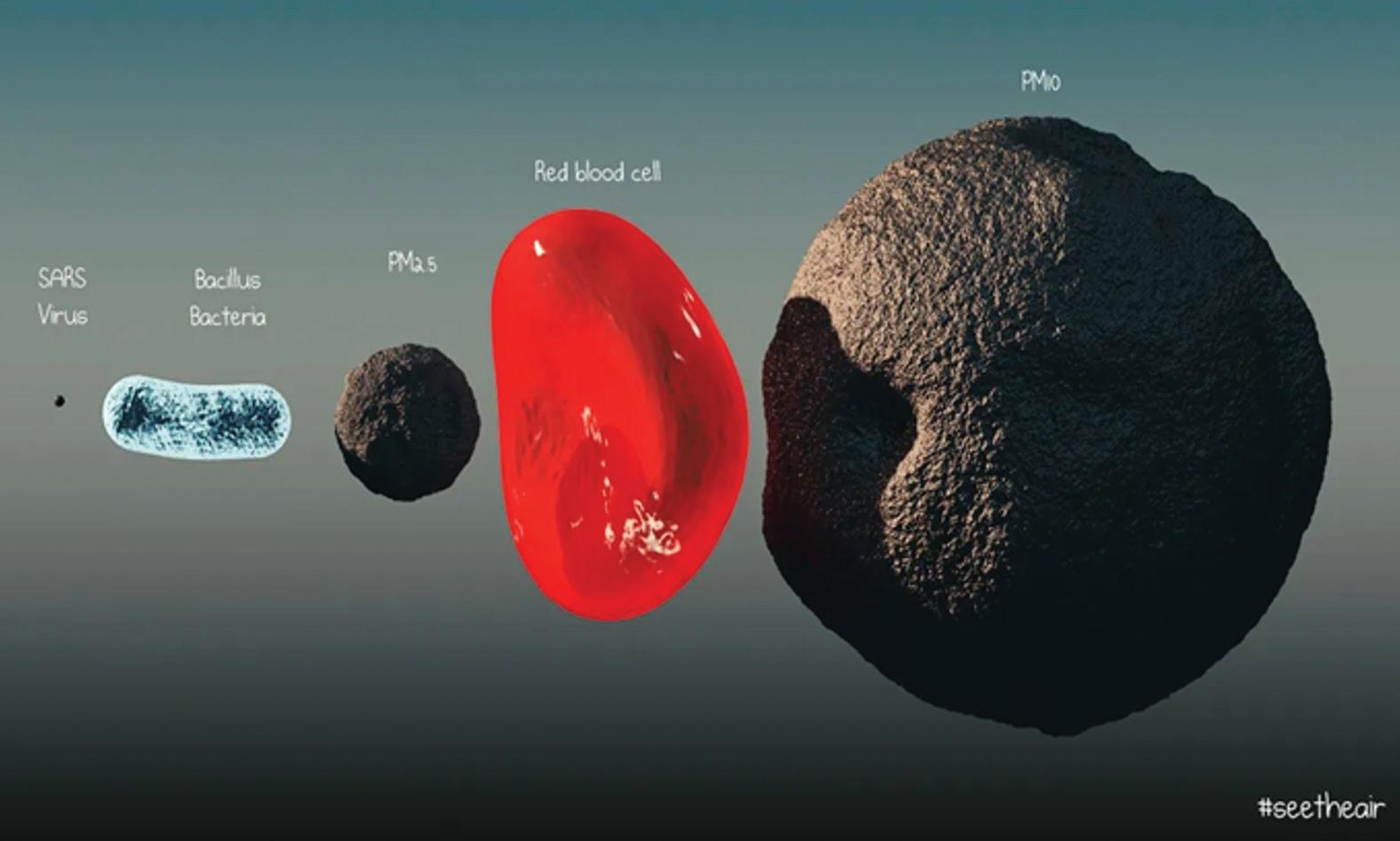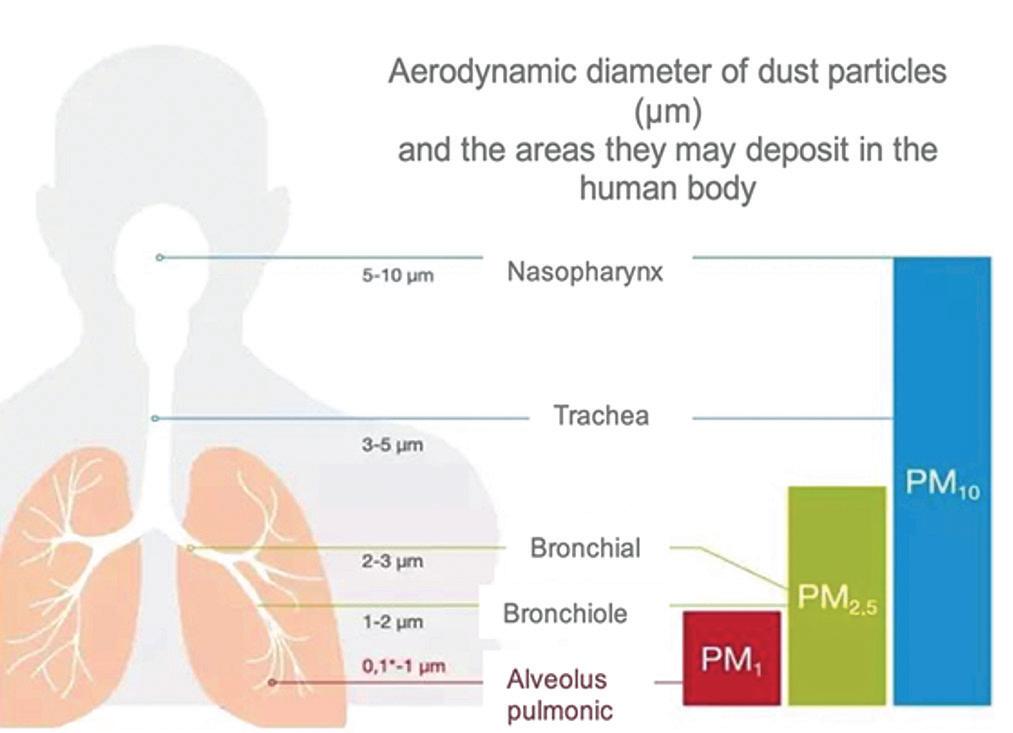
6 minute read
Q+A
NICK AGOPIAN President, Reviveaire
The move toward higher MERV-rated filters (MERV 11 and higher) reflects this change, emphasizing the need to capture smaller, more hazardous particles that contribute to long-term health deterioration.
In fact, Title 241 in California mandates minimum MERV 13 filtration under certain conditions. With heightened awareness of IAQ’s role in public health, workplace productivity, and overall well-being, HVAC design is no longer just about efficiency, but it is now a critical component of human health protection. As research continues to shape our understanding, industry standards must continue to rise above the minimum, prioritizing cleaner, healthier indoor air for all. This is not just because of the need for human health; the market is now demanding healthier spaces and willing to pay for healthier spaces. In addition, consumers actively search for spaces accordingly.
Recent studies emphasize the critical need to focus on ultrafine particles, particularly PM0.5 and PM1.0. These smaller particles remain suspended within indoor air and move with spaces in a Brownian movement, always around the breathing zone of occupants. Particles in this range pose a greater health risk than we previously understood.
Unlike larger particulates, these submicron particles can evade the body’s natural defenses, entering the bloodstream within the alveoli deep within the lungs, where they are transported to vital organs, including the heart, liver, and brain. Research has shown that chronic exposure to these ultrafine particles contributes to the following:
• Systemic inflammation
• Oxidative stress
• Cardiovascular disease
• Respiratory conditions
• Neurological disorders
The University of Nottingham’s2 latest findings confirm that inhaled PM0.5 and PM1.0 particles not only trigger inflammatory responses in the lungs but also cross the blood-brain barrier, leading to neuroinflammation, which is linked to Alzheimer’s,

Parkinson’s, and cognitive decline. This is a considerable concern and must be taken into immediate consideration, especially in young children, where Asthma attacks increase by 34% with only 10 micrograms per cubic meter, and the elderly increase dementia by 46%3
Filtration strategies must go beyond ASHRAE’s minimum standards to combat these health risks and adopt advanced air purification technologies. High-efficiency filtration, such as MERV 16 and HEPA filters, is essential for capturing ultrafine particles and preventing their circulation in indoor spaces. Additionally, non-thermal plasma (NTP) technology (ASHRAE Journal December 2023 issue) 4 is emerging as a powerful complement to traditional filtration, as it actively agglomerated submicron airborne particles, including PM0.5, PM1.0, and bioaerosols. Advanced filtration technologies that offer sustainable performance should be researched and developed.
Combining high-efficiency filters with NTP ensures a more comprehensive approach to IAQ, significantly reducing the health risks associated with ultrafine particulate exposure. Given the overwhelming evidence of the harm caused by PM0.5 and PM1.0, future IAQ standards must prioritize human health, not just equipment protection, by integrating these advanced filtration solutions into building ventilation systems. This is a critical consideration as most standards, as adopted by code, use a singular filter when filtration is never singular in nature and requires multiple stages.

Al-Attar: How can we raise the bar of IAQ if air filter performance is inconsistent and the filter loading conditions are transient?
Agopian: Things aren’t what they seem! Understanding filter performance is a variable that will require more focus from standards committees to harmonize how filters perform in situ.
ASHRAE Appendix J in Standard 52.25 is designed to provide a more realistic evaluation of air filter performance by accounting for the loss of electrostatic charge in synthetic media filters. Many MERV-rated filters rely on an initial electrostatic charge to enhance particle capture efficiency, particularly for submicron particles. However, this charge naturally dissipates over time due to exposure to humidity, airflow, and particulate loading, leading to a decline in filtration efficiency. Appendix J introduces a conditioning step that neutralizes this static charge before testing, ensuring the filter’s performance is measured based on its mechanical filtration capabilities rather than temporary electrostatic enhancement. When dealing with health, as described above, we need to know the actual filter efficiency for the life of the filter. In EPA testing, they found that a tested and rated MERV 13 drops to MERV 9 after four weeks.
The typical reduction in filter efficiency for charged media is:
• 2 to 3 MERV ratings with salt pre-conditioning
• 4 to 5 MERV with IPA pre-conditioning
Once tested appropriately, the MERV rating would be presented with an “A,” meaning a true MERV 13 would be a MERV 13A, and a true MERV 11 would be represented as MERV 11A.
This adjustment provides a more accurate and consistent assessment of filter efficiency throughout its lifespan, reinforcing the need for higher-quality mechanical filtration.
Al-Attar: How do airborne pathogens in indoor environments contribute to the spread of respiratory infections, and what role does ventilation play in mitigating their impact?
Agopian: Airborne pathogens, including viruses (influenza, SARSCoV-2), bacteria (tuberculosis, Legionella), and fungal spores (Aspergillus), move easily through the air. Humans complicate the problem through talking (Fomite), coughing, and sneezing, spreading via aerosols and droplets that remain suspended in air and distributed around via the HVAC system. In poorly ventilated spaces, these pathogens accumulate, significantly increasing infection risks.
Effective ventilation mitigates this threat by diluting (lowering concentration) and removing contaminants through enhanced air exchange rates. However, dilution will not be the entire solution. Properly ventilated spaces should be used in concert with highefficiency filtration (e.g., HEPA) and air disinfection technologies (e.g., UV-C, non-thermal plasma). These measures reduce airborne pathogen concentrations, lowering transmission rates and improving indoor air quality. The concept of using disinfection is superior to simple entrapment because pathogens such as viruses are still active.

Al-Attar: What are the long-term health consequences of prolonged exposure to indoor air contaminated with bacteria, viruses, and fungal spores, especially for individuals with pre-existing conditions?
Agopian: Prolonged exposure to contaminated indoor air increases the risk of chronic respiratory diseases such as asthma, chronic bronchitis, and hypersensitivity pneumonitis. Individuals with weakened immune systems, including the elderly, children, and those with chronic conditions (COPD, cardiovascular disease), are especially vulnerable to severe infections and complications to particles smaller than PM2.5. Additionally, mold spores and bioaerosols can trigger allergic reactions, worsen existing lung conditions, and contribute to persistent inflammatory responses, leading to long-term health deterioration. Maintaining high indoor air quality (IAQ) through adequate ventilation, advanced filtration, and air disinfection is essential to mitigating these risks.



Al-Attar: How do modern building designs and HVAC systems influence the proliferation or reduction of indoor airborne pathogens, and what advancements are being made to improve indoor air quality?
Agopian: Many modern buildings prioritize energy efficiency over ventilation, leading to reduced air exchange and increased pathogen accumulation. Standard HVAC systems, often equipped with essential filtration, struggle to effectively capture sub-micron particles or neutralize airborne pathogens. Even increased ventilation using energy recovery technologies crosscontaminates at higher levels than previously understood6.
However, indoor air quality (IAQ) technology advancements are transforming pathogen control. ASHRAE 241 compliant solutions, high-efficiency filtration (e.g., HEPA, MERV 13A+), non-thermal plasma, ionization, and UV-C sterilization are enhancing air disinfection capabilities. Additionally, smart HVAC systems with real-time monitoring and adaptive ventilation are optimizing airflows based on occupancy and pollutant levels, ensuring safer, healthier indoor environments.
Al-Attar: Beyond infectious diseases, what other physiological and cognitive effects do airborne microbial contaminants have on human health, productivity, and overall well-being?
Agopian: Poor indoor air quality, laden with microbial contaminants, VOCs, and bioaerosols, is a key contributor to Sick Building Syndrome (SBS), causing headaches, fatigue, brain fog, and respiratory irritation. Research shows that exposure to polluted indoor air impairs cognitive function, reducing focus, decision-making ability, and overall productivity.
Long-term inhalation of microbial toxins and ultrafine particles (as shown in Figure 5) can trigger chronic neuroinflammation, potentially increasing the risk of neurodegenerative diseases like Alzheimer’s and Parkinson’s. Maintaining clean indoor air through advanced filtration, ventilation, and air disinfection is crucial for enhancing cognitive function, workplace efficiency, your family’s health at home, and long-term health. Acute particulate matter exposure diminishes executive cognitive functioning after four hours regardless of inhalation pathway. We find that quick exposures to high concentrations of air pollution affect the selective attention of participants. sThis can affect an individual’s ability to concentrate on tasks and avoid distractions7.
The Shift
These insights indicate a significant paradigm shift in the field of air filtration. This shift transcends the conventional emphasis on particle capture and equipment protection, highlighting the critical necessity of prioritizing human health. The discussion underscores the hazards associated with ultrafine particles and airborne pathogens and the limitations inherent in current regulatory standards. Furthermore, it advocates for the adoption of advanced filtration and ventilation technologies. The vital importance of accurately measuring filter performance is emphasized, particularly in relation to the potential cognitive and physiological effects of poor indoor air quality.
This transformation is propelled by the imperative to safeguard public health and an increasing consumer demand for healthier and safer building environments, not simply providing shelters. We seek buildings that are good for us, not simply good-looking!
References:
1. CEC, California Energy Commission: 2019 What’s New for Residential.
2. University of Nottingham, Harm from indoor contaminants: Harm from Indoor Air Contaminants by Giobertti Morantes, Benjamin Jones, Constanza Molina, Max Howard Sherman, SSRN.
3. National Research Council, CNR-IRIB, Italy, Imperial College, London, UK, during the WHO webinar, 20th March 2024, “Toxic air is fueling Noncommunicable diseases – NCD’s. Why are we not taking action.
4. Research conducted by Timothy Lau, Ph.D, is lecturer in Sustainable Energy Engineering at The University of South Australia, Australia. Martin Belusko, Ph.D., is an executive consultant at Mondial Advisory, Parkside, South Australia, Australia, and published in the ASHRAE Journal –December 2023: Lau_Belusko_ASHRAE_Paper_ver_Submission.pdf q Preserving a wine’s taste and intensity of flavor while maintaining its uniqueness involves a series of processes to remove contaminants.
5. ASHRAE Standard 52.2 Appendix J: ANSI/ASHRAE Standard 52.2-2017.
6. ASHRAE RP 1780 RP - Test method to evaluate cross-contamination of gaseous contaminants within total energy recovery wheels.
7. Paper by Francis Pope Thomas Faherty, Gordon McFiggans and Jane Raymond, from research funded by NERC: Natural Environment Research Council.
8. https://www.nature.com/articles/s41467-025-56508-3.pdf.











